15 Everyday Habits From The ’50s That Would Definitely Raise Eyebrows Today
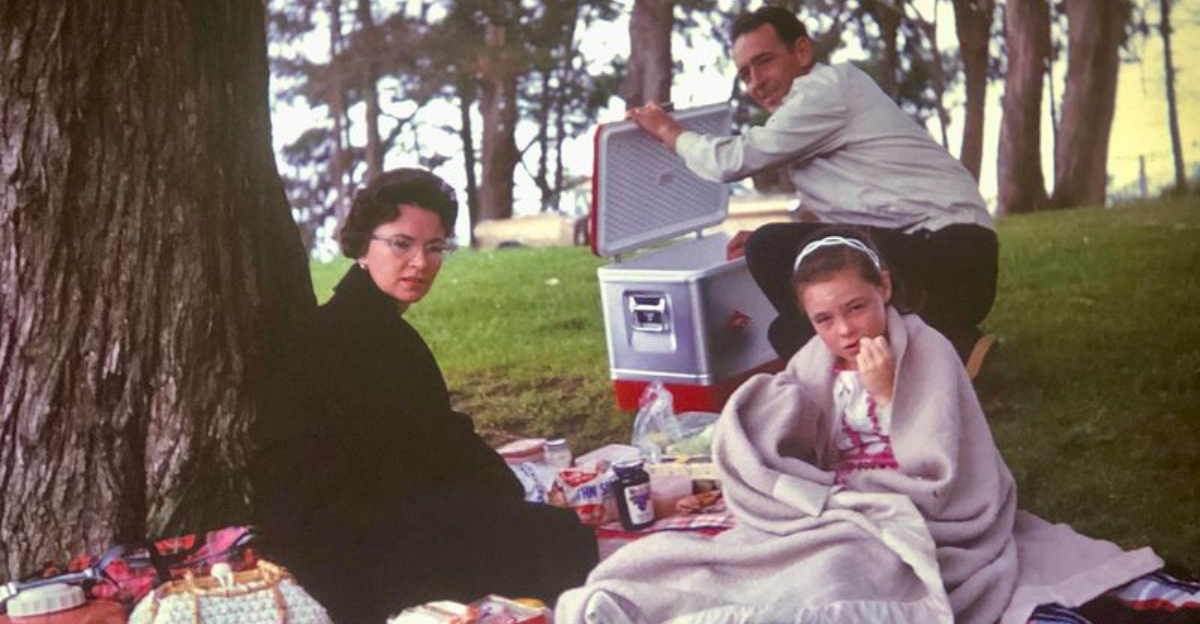
Remember when smoking in hospitals was as normal as breathing? Sounds wild, right? But it really happened!
I grew up hearing my grandparents’ incredible stories about life in the 1950s, and let me tell you—those tales were like time-traveling into a parallel universe. Back then, lighting up a cigarette in a hospital waiting room wasn’t just accepted, it was expected.
Doctors had ashtrays on their desks! And that’s just the beginning. Seatbelts were optional (if the car even had them), kids roamed the streets until dark without a cell phone in sight, and milk was delivered to your doorstep by a cheerful man in a hat.
It was a time of jukeboxes, soda fountains, and dancing to rock ’n’ roll in your living room. But while the post-war era radiated a certain charm and optimism, it also came with a hefty dose of eyebrow-raising habits.
1. Lighting Up Anywhere – Even in Delivery Rooms!
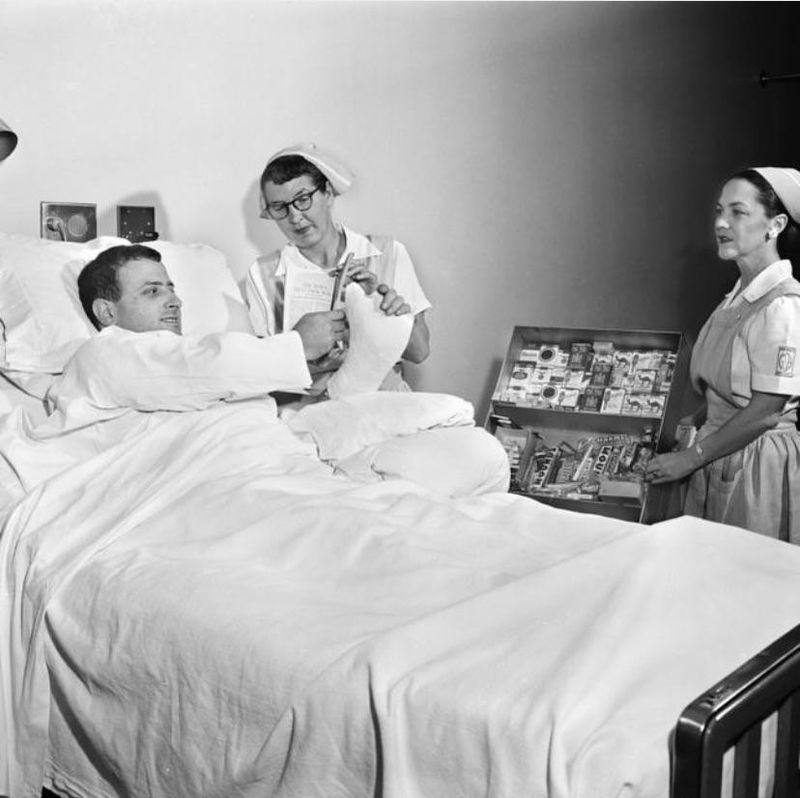
The first time I saw old hospital photos with ashtrays in patient rooms, I nearly fell off my chair! Cigarettes weren’t just allowed in the 1950s – they were practically mandatory in social settings. Doctors puffed away during consultations and even endorsed specific brands in magazine ads, claiming health benefits.
Expectant fathers nervously chain-smoked in waiting rooms while their wives gave birth. Movie theaters, airplanes, offices, and restaurants were perpetually clouded in a gray haze. Nobody batted an eye at pregnant women smoking or parents lighting up with babies in their arms.
The concept of secondhand smoke didn’t exist yet. Children regularly purchased cigarettes for their parents from corner stores without raising suspicions. Some hospitals even included cigarettes on patient meal trays as a comfort measure! This ubiquitous smoking culture would trigger absolute outrage in today’s health-conscious world.
2. Salesmen Knocking Without Warning
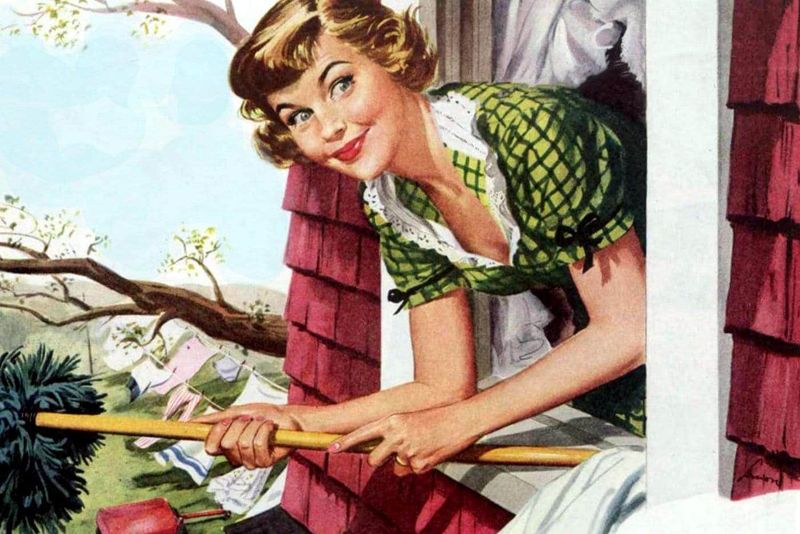
Knock-knock! “Good afternoon, ma’am! Would you like to see our newest vacuum model?” My grandmother actually bought her prized encyclopedia set from a charming fellow who appeared unannounced on her doorstep one Tuesday afternoon in 1954.
Door-to-door sales wasn’t just a career – it was a thriving industry and perfectly normal shopping experience. Housewives regularly opened their doors to complete strangers selling everything from household appliances to insurance policies. These unexpected visitors were welcomed inside for demonstrations and friendly chats over coffee.
The Tupperware party phenomenon grew from this culture of home-based selling. No background checks, no appointments, no stranger danger warnings – just a smile and a good pitch was all it took to gain entry. Today, security cameras would capture these salespeople before they even reached the porch, and suspicious homeowners would likely call the police rather than invite them in for a product demo!
3. Kids Roaming Free Until Dinner
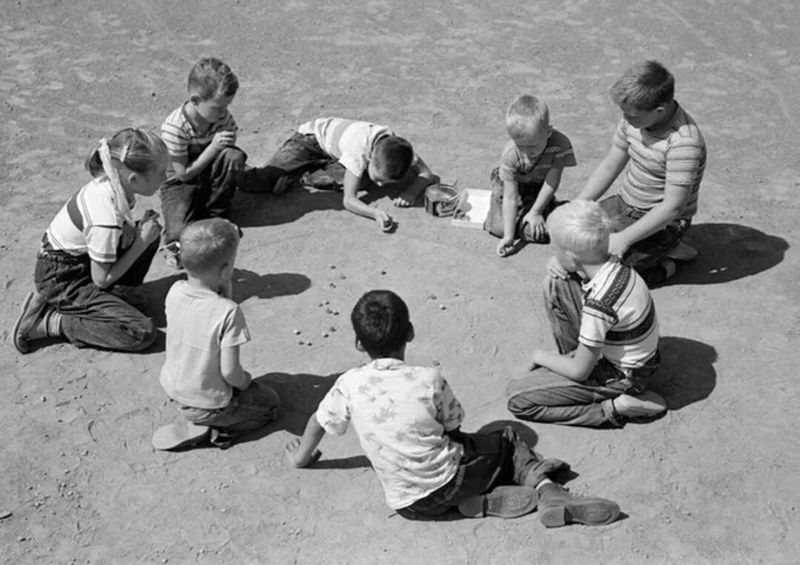
“Be home when the streetlights come on!” That’s all the instruction my dad got before disappearing for hours on his bike each summer day. Children in the ’50s experienced a freedom that would make modern parents hyperventilate.
Youngsters as young as five wandered neighborhoods unsupervised, playing in vacant lots, exploring woods, and riding bikes miles from home. Parents had no GPS trackers, no cell phones for check-ins, and surprisingly little worry. Kids hitchhiked to baseball practice, swam in unsupervised quarries, and built dangerous backyard contraptions without adult oversight.
Neighborhood communities functioned as collective guardians, with any adult feeling empowered to correct misbehaving children. The concept of “stranger danger” barely existed. Today, allowing a seven-year-old to walk alone to the park could result in a visit from child protective services! The pendulum has swung dramatically from free-range childhood to helicopter parenting.
4. Pearls and Heels for Housework
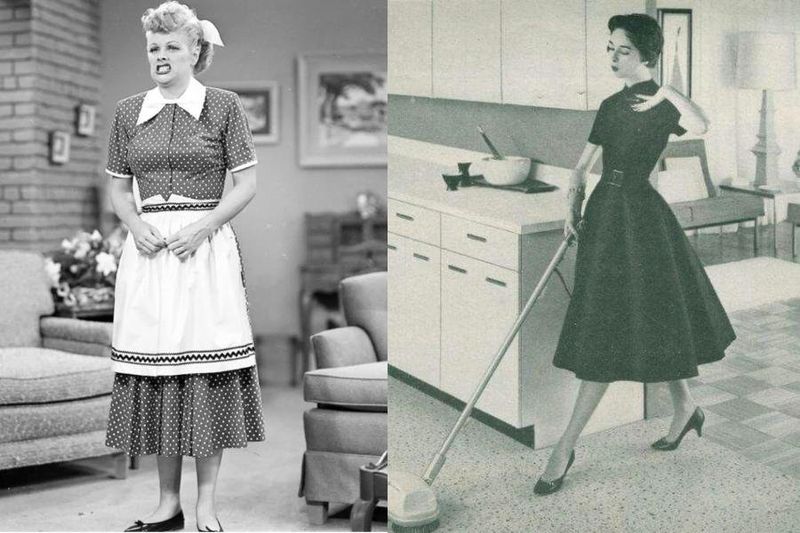
Vacuuming in stilettos? You bet! My grandmother’s photo albums are filled with pictures of her doing dishes in dresses that today I’d save for special occasions. The 1950s housewife wasn’t just expected to maintain an immaculate home – she needed to look magazine-cover ready while doing it.
Women applied full makeup, styled their hair, and donned nice dresses before their husbands woke up. Television shows and advertisements reinforced this glamorous homemaker ideal. Many women wore girdles daily, even while scrubbing floors or doing laundry.
The pressure to maintain this perfect feminine appearance while managing household duties was intense. Women who didn’t meet these standards risked social judgment or criticism from their husbands. Modern athleisure-wearing moms would be considered downright scandalous by 1950s standards! This expectation reflected deeper gender role restrictions that limited women’s identities to homemaking and appearance.
5. Milk Delivered in Glass Bottles
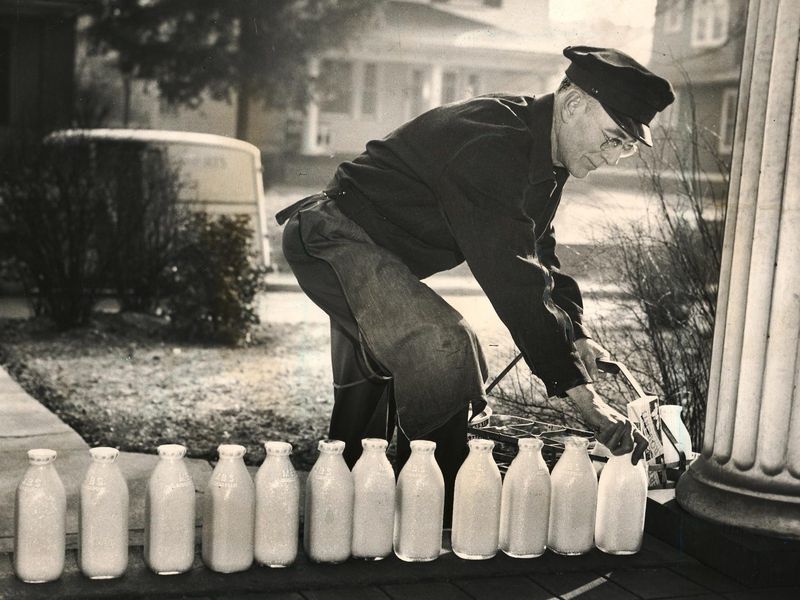
The gentle clinking of glass bottles on the doorstep at dawn was the soundtrack to 1950s mornings. I still remember my grandparents’ stories about racing to bring in the milk before it froze in winter or soured in summer heat.
Milkmen were trusted community fixtures who knew families by name and even had keys to some homes to place dairy products directly in iceboxes. Households left notes requesting extra butter or cream, along with empty bottles and payment. This personal service created neighborhood connections that have largely disappeared.
The milk itself was different too – unhomogenized with cream rising to the top that moms would skim off for coffee. Children were taught to carefully rinse bottles for collection. While some boutique dairies have revived home delivery, the ubiquitous nature of this service – and the casual trust it represented – would seem remarkably quaint to modern consumers accustomed to self-checkout and online grocery ordering.
6. Spanking as Standard Discipline
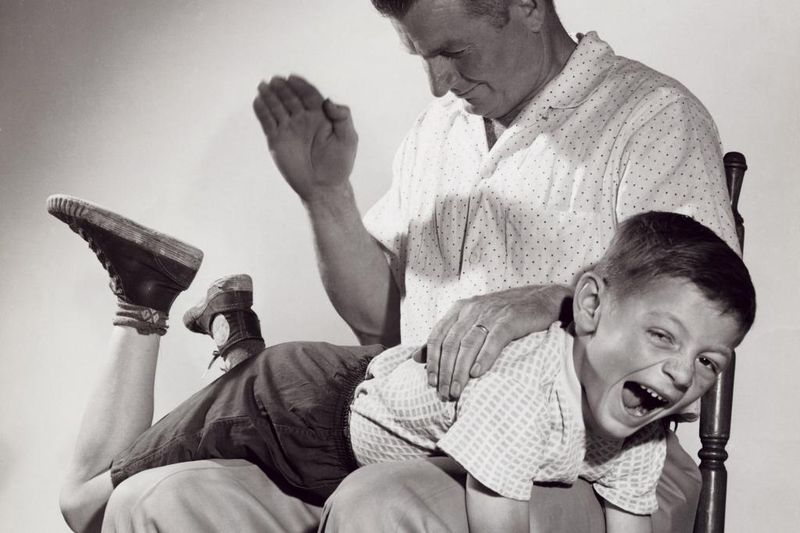
“Wait until your father gets home!” Those words struck fear into 1950s children, often signaling an impending spanking. Physical punishment wasn’t just common – it was expected as proper parenting.
Schools reinforced this approach, with principals and teachers wielding paddles, rulers, and other implements to discipline students. Parents openly discussed spanking techniques at bridge clubs and neighborhood gatherings. Wooden spoons, belts, and hairbrushes were household disciplinary tools, and children who complained to other adults about punishment were often met with, “Well, what did you do to deserve it?”
Public spanking in stores or restaurants didn’t raise eyebrows. The philosophy “spare the rod, spoil the child” dominated child-rearing approaches. Today, such practices could trigger child abuse investigations and criminal charges in many jurisdictions. The shift represents our evolving understanding of child development and the potential psychological impacts of physical punishment.
7. Cars Without Seatbelts or Safety Seats

Bouncing freely in the back of station wagons was practically a national pastime for us kids in the ’50s! Automobile safety was virtually nonexistent by today’s standards, with children standing on seats, sitting in drivers’ laps, or riding unrestrained in pickup truck beds.
Babies rode in mothers’ arms in the front seat or in flimsy car seats that hooked over the bench seat with zero crash protection. Toddlers stood on the passenger seat looking out the windshield. Station wagons featured rear-facing third-row seats with nothing separating children from the traffic behind them.
Car interiors featured hard metal dashboards, protruding knobs, and no safety glass. Seatbelts were rare luxuries until the late ’50s, and even then, using them was considered optional and fussy. A family of seven might pile into a sedan for a Sunday drive without a second thought for restraints. Modern parents witnessing these practices would be horrified – and ready to call authorities!
8. Gender-Segregated Education and Careers
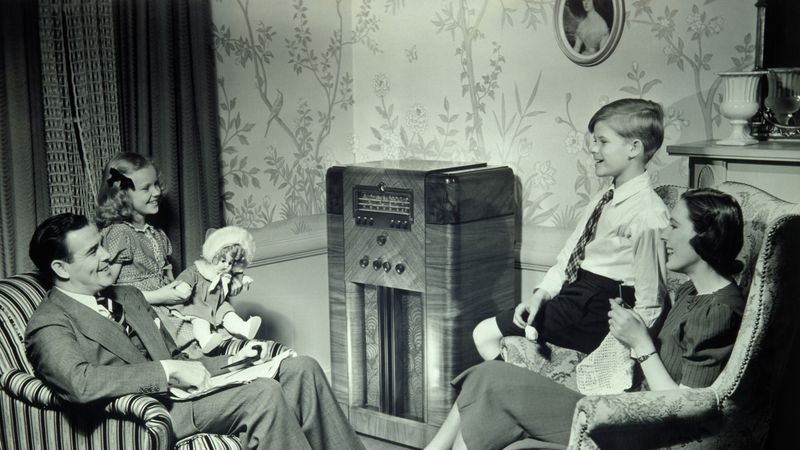
“Girls take home economics, boys take shop class” wasn’t just a suggestion – it was educational policy! I still remember my mother’s frustration at being forced to learn cooking while her brother got to build things in woodshop.
Schools blatantly prepared boys and girls for entirely different futures. Girls learned sewing, cooking, and childcare skills to become homemakers, while boys studied mechanics, woodworking, and business to become breadwinners. High school guidance counselors actively discouraged young women from pursuing medicine, law, or engineering, steering them instead toward nursing, teaching, or secretarial work.
College catalogs openly advertised programs where women could find suitable husbands rather than careers. Help wanted ads were divided into “Men’s Jobs” and “Women’s Jobs” sections in newspapers. The expectation that a woman would quit her job immediately upon marriage was standard practice. Today’s gender-neutral education and employment policies would have seemed not just progressive but downright revolutionary to 1950s Americans.
9. Hitchhiking as Normal Transportation
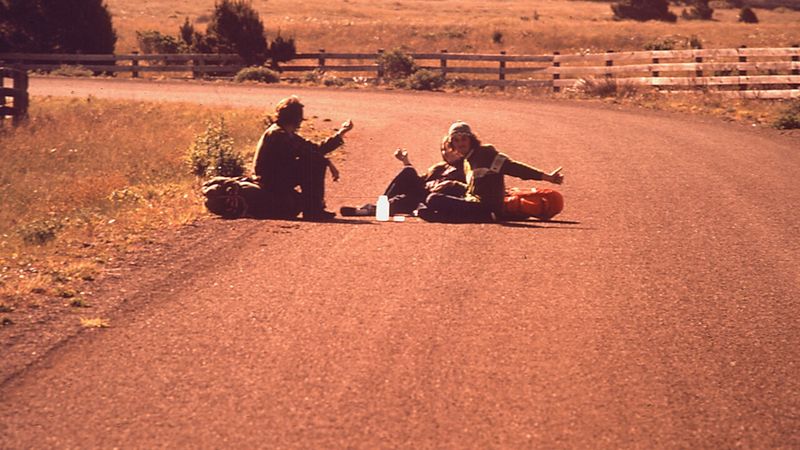
Thumb out, smile ready – that’s how many folks got around in the fabulous fifties! My uncle swears he hitchhiked from Chicago to San Francisco with nothing but $5 and a small suitcase when he was just 17.
Hitching rides from strangers wasn’t considered dangerous – it was practical transportation. College students routinely thumbed rides home for holidays. Servicemen in uniform were guaranteed quick picks from patriotic drivers. Even women and teenagers commonly hitchhiked for everyday transportation needs.
Drivers felt a social obligation to help fellow travelers and rarely feared picking up strangers. Parents taught children hitchhiking etiquette rather than warning them against the practice. Rural communities especially relied on this informal transportation network. The decline of hitchhiking reflects our modern stranger danger awareness and reduced community trust. Today, most parents would be horrified to learn their teenager accepted – let alone solicited – a ride from an unknown driver.
10. Doctors Recommending Cigarettes
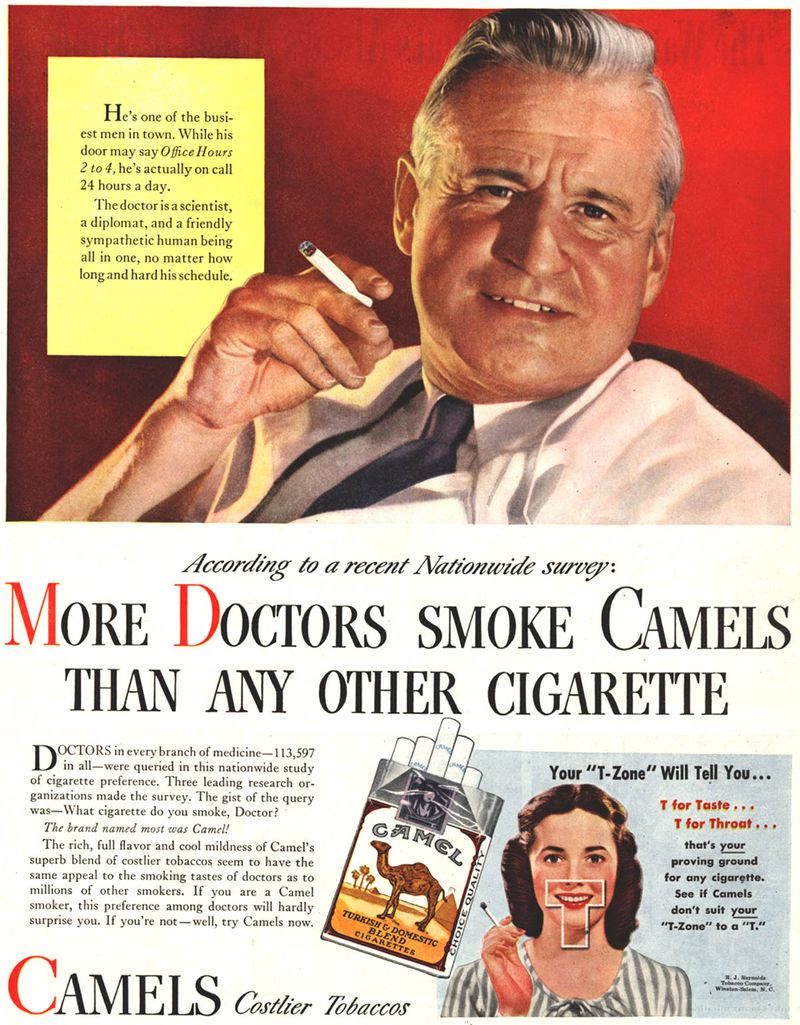
“More doctors smoke Camels than any other cigarette!” proclaimed advertisements featuring physicians in white coats. I recently found my grandfather’s medical journal from 1952 with cigarette ads right next to articles about treating respiratory conditions!
The medical establishment not only tolerated smoking but actively endorsed specific brands. Doctors smoked during patient consultations and recommended cigarettes to calm nerves or manage weight. Tobacco companies distributed free cigarettes in hospital waiting rooms and to medical students.
Pregnant women were advised that smoking would relax them and produce smaller babies for easier delivery – advice that makes modern obstetricians shudder. Some doctors even suggested that menthol cigarettes could help with congestion and colds! The disconnect between medical authority and basic health knowledge is staggering by today’s standards. This dangerous misinformation campaign represents one of the most shocking public health failures of the era.
11. Children Operating Dangerous Machinery

Hand a 10-year-old boy a chainsaw? Perfectly normal in the ’50s! My father started driving a tractor at age 8 and was operating power tools by 10 – experiences that shaped his childhood but would trigger CPS visits today.
Children regularly operated lawn mowers, power tools, and farm equipment without supervision or safety gear. Boys were expected to help with dangerous tasks to “build character” and learn practical skills. Young teenagers drove cars on family farms years before legal driving age.
Chemistry sets contained genuinely hazardous chemicals that could explode or create toxic gases. BB guns and pocket knives were common birthday gifts for elementary-aged children. This approach to childhood reflected the era’s emphasis on early responsibility and practical skill development over safety concerns. The contrast with today’s heavily supervised childhood experiences couldn’t be starker – modern parents might face neglect charges for allowing similar childhood independence around potentially dangerous tools.
12. Casual Littering Everywhere
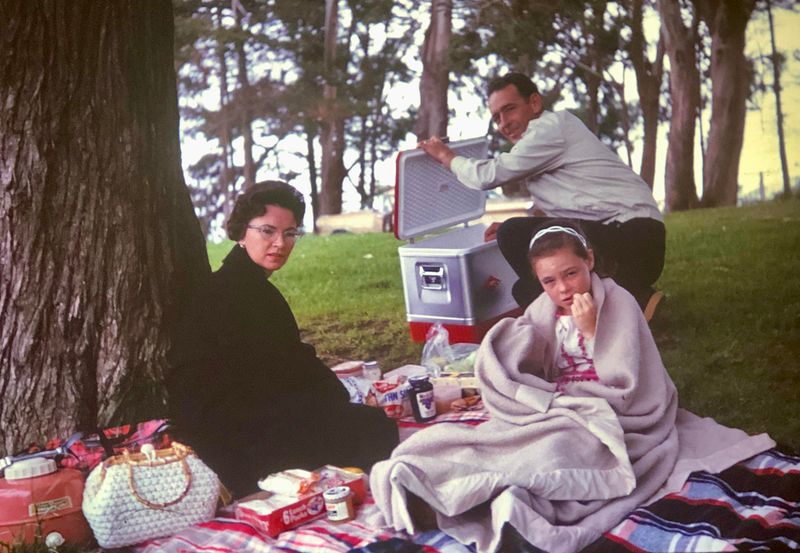
Tossing empty soda bottles from car windows was as natural as breathing in the ’50s! The first time I watched “Mad Men” and saw the Draper family shake out their picnic blanket, leaving all their trash scattered across a beautiful park, I gasped – but that scene perfectly captured the era’s attitude.
People flicked cigarette butts wherever they stood and discarded wrappers without a second thought. Highways were lined with debris, and scenic lookouts doubled as informal dumping grounds. Fast food restaurants provided no trash receptacles, assuming customers would simply throw waste out their car windows.
The concept of environmental impact barely existed. Rivers and lakes served as disposal sites for everything from motor oil to old appliances. The famous “Crying Indian” anti-littering campaign was still decades away. This casual attitude toward waste disposal would shock modern environmentally-conscious citizens who’ve grown up with recycling programs and strict littering penalties.
13. Pregnant Women Drinking and Smoking
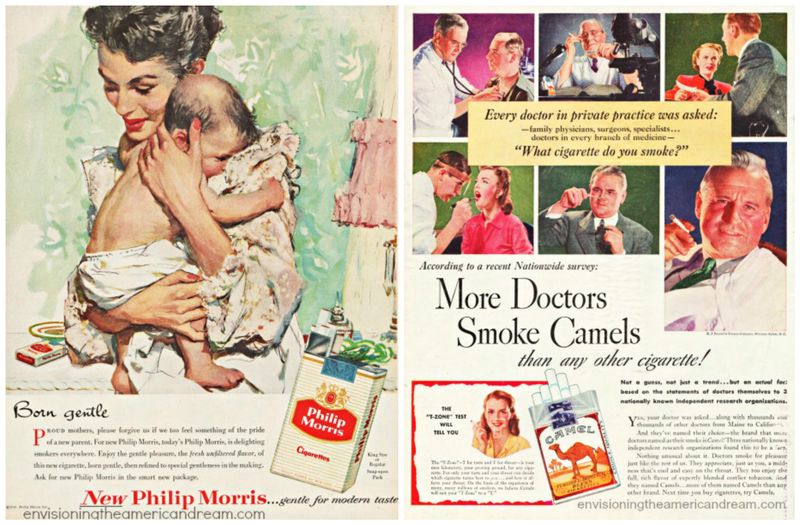
“Have a cocktail, it’ll calm the baby down!” My mother-in-law still recalls her doctor recommending a daily glass of wine during her 1958 pregnancy to “keep her nerves steady.”
Expecting mothers in the ’50s received advice that seems horrifying today. Cigarettes were suggested to prevent weight gain and reduce birth weight for easier delivery. Alcohol was prescribed for sleep troubles and anxiety throughout pregnancy. Doctors reassured women that the placenta would “filter out” any harmful substances.
Advertisements specifically targeted pregnant women with images of glowing mothers-to-be enjoying cigarettes and alcoholic beverages. Prenatal vitamins were sometimes considered unnecessary, while diet pills were occasionally recommended to prevent excessive pregnancy weight gain. Fetal Alcohol Syndrome wouldn’t be identified until 1973, and the full dangers of prenatal smoking remained unrecognized. This cavalier approach to prenatal health represents one of the most striking contrasts between 1950s medical advice and modern understanding.
14. Radioactive Products for Everyday Use
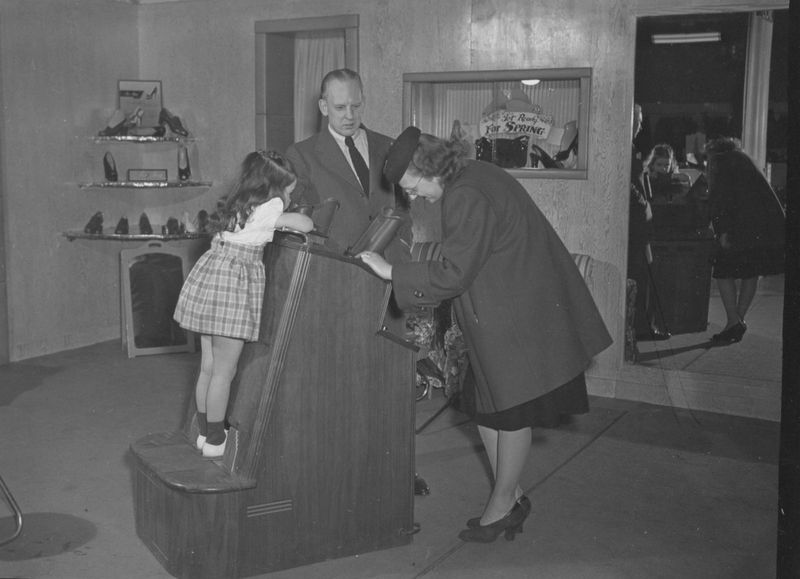
Glow-in-the-dark watches were all the rage in my youth – little did we know we were strapping radioactive material directly to our wrists! The atomic age brought an obsession with radioactivity that bordered on the absurd.
Radium was incorporated into countless consumer products, from luminous clock faces to children’s toys. Women working in factories painted watch dials with radium paint, often licking their brushes to create fine points – a practice that led to horrific radiation poisoning. Shoe stores featured fluoroscopes that used X-rays to show customers how shoes fit their foot bones, exposing shoppers (especially children) to harmful radiation.
Uranium glazes gave dishes and glassware a distinctive orange-red hue prized by homemakers. Some health spas even offered radioactive water treatments as health tonics! The dangers of radiation were either unknown or deliberately downplayed by manufacturers. Today’s strict regulation of radioactive materials makes these common 1950s products seem almost unbelievably reckless.
15. Sunbathing with Baby Oil and Reflectors
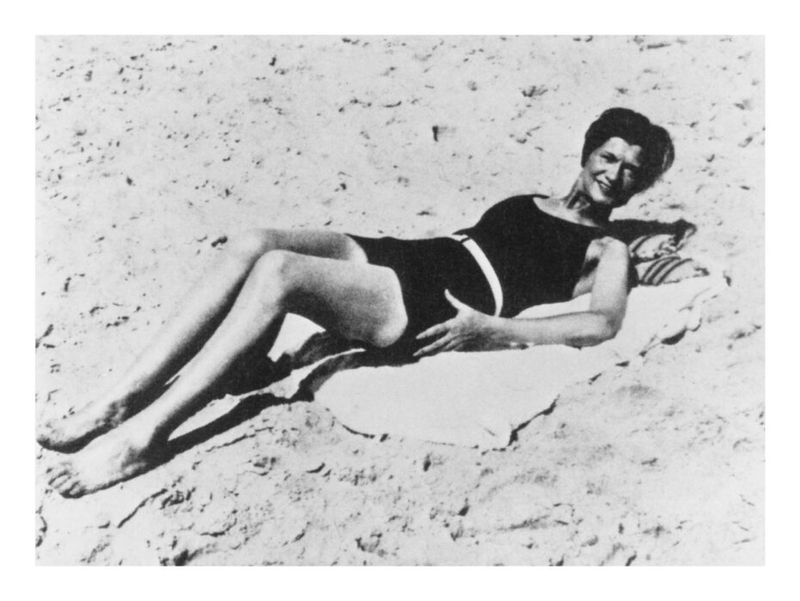
Slathered in baby oil and iodine, my aunt and her friends would spend entire summer days deliberately baking themselves to achieve the deepest possible tan. The 1950s sunbathing routine would make modern dermatologists faint!
Tanning wasn’t just popular – it was pursued with scientific precision. People used reflective panels to concentrate sunlight on their faces and applied concoctions of oil, iodine, and even butter to enhance burning. Sunburn was considered a necessary first step to a good tan, with peeling skin viewed as a badge of honor rather than damage.
Sunscreen barely existed, and what was available offered minimal protection. Fashion magazines promoted “healthy” tans as signs of leisure and affluence. Some sunbathers even applied tea or coffee to deepen their color artificially. The connection between UV exposure and skin cancer was poorly understood, making this intensive tanning culture one of the most physically damaging beauty trends of the era.
